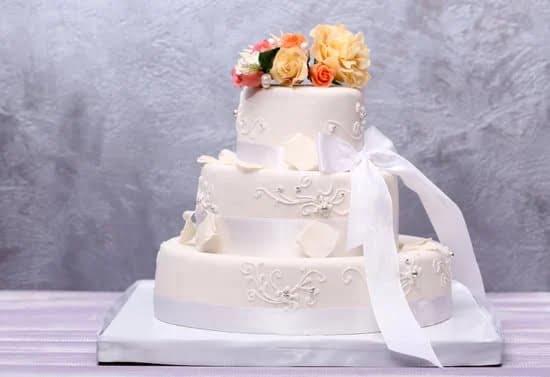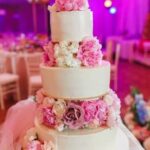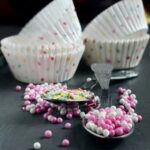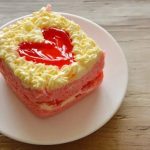When it comes to cake decorating, buttercream is the undisputed champion. With its creamy texture and versatility, buttercream is the go-to choice for creating stunning designs on cakes of all kinds. Whether you’re a beginner or an experienced baker, mastering the art of buttercream can take your cake decorating skills to new heights.
One of the key reasons why buttercream is so popular in cake decorating is its ability to easily adapt to different designs. From smooth and sleek finishes to intricate piping details, buttercream can do it all. Its pliability allows for seamless blending and shaping, making it ideal for sculpting flowers, borders, and even three-dimensional decorations. No matter what design you have in mind, buttercream can turn it into a reality.
Not only is buttercream versatile in terms of design options, but it also offers a wide range of flavor possibilities. By incorporating different extracts or flavorings such as vanilla, chocolate, or fruit flavors, you can customize your buttercream to suit your taste preferences or match the theme of your cake. Additionally, with the addition of food coloring, you can create vibrant and eye-catching decorations that are sure to impress.
With its endless possibilities and ease of use, it’s clear why buttercream reigns supreme in the world of cake decorating. In the following sections, we will delve deeper into different types of buttercream, essential ingredients for a perfect recipe, step-by-step instructions on how to make it from scratch, various piping techniques using buttercream, troubleshooting common issues that may arise during the process, as well as providing inspiration and ideas for your next masterpiece.
So get ready to elevate your cake decorating game with our homemade buttercream recipe.
Types of Buttercream for Cake Decorating
When it comes to cake decorating, choosing the right type of buttercream is crucial. Each type has its own unique texture and taste, making them suitable for different cake styles or personal preferences. Understanding the differences between each type can help you achieve your desired results and create stunning cake designs. Here are some popular types of buttercream used in cake decorating:
American Buttercream
American buttercream is perhaps the most commonly used type of buttercream for cake decorating. It is simple to make and requires just a few ingredients – butter, powdered sugar, vanilla extract, and a little milk or cream. This type of buttercream has a sweet taste and a thick consistency, making it perfect for piping decorations and borders on cakes.
Swiss Meringue Buttercream
Swiss meringue buttercream is made by heating egg whites and sugar together until the sugar dissolves, then whipping it into a fluffy meringue before incorporating softened butter. This type of buttercream has a silky smooth texture and less sweetness compared to American buttercream. Swiss meringue buttercream works well with intricate piping details as it holds its shape beautifully.
Italian Meringue Buttercream
Italian meringue buttercream is similar to Swiss meringue buttercream but involves cooking a hot syrup before adding it to the whipped egg whites. The hot syrup cooks the eggs while creating stability in the meringue. The mixture is then combined with softened butter to create a light and airy frosting that is less sweet than American buttercream. Italian meringue buttercream is stable at both warm and cool temperatures, making it ideal for elaborate cake designs.
French Buttercream
French buttercream is known for its luxurious taste and velvety texture. It differs from other types as it uses egg yolks in addition to butter, sugar, and flavorings. This type of buttercream has a rich and decadent flavor with a smooth consistency. French buttercream is perfect for spreading crumb coats on cakes or filling delicate pastries.
Choosing the right type of buttercream for your cake decorating project depends on the desired taste, texture, and design intricacy. Experimenting with different types can open up a world of creative possibilities and allow you to find the perfect match for your next cake creation.
Essential Ingredients for a Perfect Buttercream Recipe
To create the perfect buttercream for cake decorating, it is essential to have the right ingredients. Each ingredient plays a crucial role in achieving the desired texture and taste of your buttercream. Here are the essential ingredients you’ll need to make a perfect buttercream recipe:
- Butter: The main component of any buttercream recipe is, of course, butter. It is important to use unsalted butter at room temperature for best results. The butter provides the rich and creamy base for your frosting.
- Powdered Sugar: Also known as confectioners’ sugar or icing sugar, powdered sugar adds sweetness and stability to the buttercream. It helps create a smooth texture and ensures that your frosting holds its shape when piped.
- Vanilla Extract: Vanilla extract adds a delightful flavor to your buttercream frosting. It balances out the sweetness and gives it a subtle aroma. You can also experiment with other extracts like almond or lemon to add different flavors.
- Milk or Cream: Adding a liquid component like milk or cream helps in achieving the desired consistency of your buttercream recipe. It thins out the frosting if it’s too thick and makes it more spreadable or pipeable.
- Salt: A pinch of salt may seem counterintuitive, but it actually enhances the overall flavor profile of your buttercream by balancing out the sweetness and bringing out other flavors.
- 6.Natural Food Coloring (optional): If you want to add some vibrant colors to your decorations, consider using natural food coloring made from fruits or vegetables instead of artificial dyes. These natural colorings will not only make your cake visually appealing but also provide a delicious flavor.
By using these essential ingredients in precise quantities, you can ensure that every batch of homemade buttercream turns out smooth, tasty, and perfect for cake decorating purposes.
Some bakers may also choose to incorporate additional ingredients such as cocoa powder for chocolate-flavored buttercream or fresh fruit purees for added fruity flavors. These variations offer endless possibilities for creating unique and delicious buttercream recipes that cater to different tastes and preferences.
In the next section, we’ll guide you through the step-by-step instructions on how to make the perfect buttercream from scratch, ensuring a delectable and beautiful frosting for your cakes.
Step-by-Step Instructions for Making the Perfect Buttercream
To make the perfect buttercream for cake decorating, follow these step-by-step instructions:
Step 1: Gather Your Ingredients
- 1 cup (2 sticks) unsalted butter, at room temperature.
- 4 cups powdered sugar.
- 2 teaspoons vanilla extract.
- Pinch of salt.
Step 2: Cream the Butter
In a mixing bowl, cream the softened butter until it is light and fluffy. This can be done with an electric mixer or stand mixer on medium speed for about 2 to 3 minutes.
Step 3: Gradually Add Powdered Sugar
Gradually add the powdered sugar, about one cup at a time, into the creamed butter. Mix on low speed after each addition until fully incorporated. Scraping down the sides of the bowl as needed helps ensure all the ingredients are well combined.
Step 4: Add Vanilla Extract and Salt
Once all of the powdered sugar has been added and mixed in, add in the vanilla extract and a pinch of salt. The vanilla extract adds flavor depth while the salt balances out sweetness.
Step 5: Beat Until Smooth and Fluffy
Continue beating the mixture on medium-high speed until smooth and fluffy. This usually takes around 2 to 3 minutes. The longer you mix it, the lighter and fluffier your buttercream will become.
Step 6: Adjust Consistency (Optional)
If you prefer a thinner consistency for spreading or filling layers, you can add a teaspoon or two of milk or cream to loosen up your buttercream. If you want a stiffer consistency for piping intricate designs, add more powdered sugar gradually until desired thickness is achieved.
Now that you have your homemade buttercream ready, it’s time to unleash your creativity and start decorating your cakes. Remember to keep the buttercream covered until you’re ready to use it, as exposure to air can cause it to form a crust. Enjoy the process and have fun experimenting with different flavors, colors, and piping techniques to create stunning cake designs.
Flavoring and Coloring Your Buttercream
Choosing Your Flavor
When it comes to flavoring your buttercream, the possibilities are endless. One of the most popular choices is vanilla, which adds a sweet and classic taste to any cake. However, don’t be afraid to get creative with other flavors such as chocolate, almond, or even citrus. Experimenting with different extracts and spices can elevate your buttercream and complement the overall flavor of your cake.
For a rich and indulgent option, consider adding melted chocolate or cocoa powder to your buttercream. This will create a smooth and velvety texture that chocolate lovers will adore. And if you’re looking for a fruity twist, incorporate pureed berries or citrus zest into your buttercream for a burst of freshness.
Coloring Techniques
Adding color to your buttercream opens up a world of possibilities for vibrant and visually stunning cake decorations. To achieve a solid color, simply add gel food coloring gradually until you reach the desired shade. Gel food coloring works best as it doesn’t alter the consistency of the buttercream.
If you’re looking to create multi-colored or gradient effects, divide your prepared buttercream into separate bowls before adding color. You can then mix in different shades or apply the colors individually using piping bags for more control. To create an ombré effect on your cake, start with one color at the bottom and gradually transition to another color at the top.
Remember that lighter colors may require more food coloring compared to darker shades-start with small amounts and gradually add more as needed.
Tips for Flavoring and Coloring
To ensure an evenly flavored and colored buttercream, mix in your flavorings or food coloring during the final stages of preparation. This allows you to adjust the amount based on personal preference without overworking the mixture.
It’s also crucial to taste-test as you go along when flavoring your buttercream. Start with a small amount of flavoring, mix it in, and then taste. Add more as needed until you achieve the desired intensity. Remember that flavors will develop over time, so allow your buttercream to sit for a few hours or overnight before adjusting the taste further.
When coloring your buttercream, keep in mind that colors may intensify over time as well, so err on the side of caution when adding food coloring. You can always add more but it’s more difficult to lighten the shade once it’s too dark.
Whether you choose classic vanilla or experiment with bold flavors and vibrant colors, flavoring and coloring your buttercream provides endless opportunities for creativity in cake decorating. Don’t be afraid to take risks and have fun with different combinations – your taste buds and visual senses will thank you.
Different Piping Techniques Using Buttercream
Piping is a fundamental skill in cake decorating that allows you to create intricate and beautiful designs using buttercream. Whether you’re a beginner or an experienced decorator, mastering different piping techniques opens up a world of possibilities for creating stunning cakes. In this section, we will explore some popular piping techniques using buttercream and provide step-by-step instructions, tips, and visual examples for each technique.
- Rosettes: Rosettes are elegant and versatile decorations that can be used to cover an entire cake or add finishing touches to specific areas. To create rosettes, start by holding the piping bag at a 90-degree angle to the surface of the cake.
Squeeze the bag while moving your hand in a circular motion, gradually widening the circle. Continue piping until your rosette has reached the desired size, then release pressure on the bag and lift it away. - Borders: Borders are perfect for adding a clean and polished finish to the edges of your cakes. There are various border designs you can create with buttercream, such as shells, zigzags, or rope borders. To pipe a shell border, hold the piping bag at a 45-degree angle with its tip touching the surface of the cake.
Squeeze out a small amount of buttercream while moving your hand in an upward half-circle motion. Release pressure on the bag when you reach the starting point and lift it away. - Ruffles: Ruffles add decorative waves to your cakes and are particularly stunning for romantic or vintage-themed designs. Start by attaching a petal tip to your piping bag and hold it at a 45-degree angle against the surface of the cake. Apply steady pressure on the bag while moving it side to side in gentle arcs to create ruffled layers. Continue piping until you achieve the desired effect.
- Writing: Adding personalized messages or names to cakes is made easy with buttercream. Fill a piping bag fitted with a small round tip with buttercream and hold it perpendicular to the cake’s surface. Apply gentle pressure to the bag as you guide it to create smooth and consistent letters. Practice your handwriting on parchment paper before piping directly onto your cake.
By mastering these different piping techniques, you can elevate the visual appeal of your cakes and impress friends, family, or clients. Remember that practice makes perfect, so don’t be discouraged if your first attempts aren’t flawless. With time and patience, you’ll develop the skills needed to create beautifully piped buttercream decorations.
Piping Techniques Using Buttercream
| Technique | Description |
|---|---|
| Rosettes | Create elegant circular swirls with buttercream |
| Borders | Add clean finishing touches to the edges of your cakes |
| Ruffles | Create decorative waves and layers on your cakes |
| Writing | Add personalized messages or names to your cakes |
Troubleshooting Common Buttercream Issues
One of the challenges that can arise when making buttercream is encountering common issues that may affect its texture, smoothness, or overall appearance. However, with some troubleshooting and the right techniques, these problems can be easily resolved. In this section, we will address the most common buttercream issues and provide solutions to help you overcome them.
One common issue that may occur is graininess in buttercream. This can happen if the sugar used in the recipe is not properly dissolved or if it contains large granules. To avoid this problem, make sure to use powdered sugar or finely grind granulated sugar before adding it to your buttercream mixture. Additionally, it is important to beat the butter and sugar together until they are fully combined and smooth.
Another challenge you may face is buttercream separation. Separation happens when the fat in the butter separates from the liquid ingredients used in the recipe. To prevent this from happening, ensure that all your ingredients are at room temperature before starting.
Incorporating room temperature eggs into your mixture gradually can also help to stabilize it and prevent separation. If separation does occur during preparation, try placing your bowl of buttercream in a warm water bath and slowly mix it until it comes back together.
Air bubbles are another frequent issue when working with buttercream. These bubbles can create an uneven surface when applying the frosting on a cake or piping decorations. One easy solution for removing air bubbles is using a spatula or paddle attachment on your mixer to gently press out any trapped air pockets while mixing the buttercream.
By understanding how to troubleshoot common issues with buttercream, you will be better equipped to achieve a flawless finish on your cakes and desserts. With practice and patience, you will become more confident in your abilities as a cake decorator.
Buttercream Decorating Ideas and Inspiration
Buttercream is not only versatile and easy to work with, but it also offers endless possibilities for creative cake decorating designs. Whether you are a beginner or an experienced baker, the following ideas and inspiration will help you elevate your cake decorating skills using homemade buttercream.
One popular technique for buttercream decorating is creating floral designs, such as beautiful rosettes. To achieve this look, simply attach a star-shaped piping tip to a piping bag filled with buttercream and apply even pressure while moving the tip in a circular motion. This creates intricate swirls that resemble stunning roses. You can use different colors of buttercream to create a multi-colored effect or add edible pearls or sprinkles for added detail.
Another idea for buttercream decoration is creating borders and ruffles. Borders can be piped onto the edges of a cake to define its shape or add a decorative element. Ruffles, on the other hand, can be piped in layers to create an elegant and textured design.
To achieve this effect, start by piping a line of buttercream vertically along the edge of the cake using a petal tip. Then, gently move the tip back and forth while applying slight pressure to create small ruffles.
For those looking to take their buttercream decorations to the next level, consider experimenting with stencils and airbrushing techniques. Stencils can be used to create intricate patterns or designs on top of your frosted cake by placing them directly onto the surface and dusting them with powdered sugar or cocoa powder. Airbrushing involves using an airbrush tool filled with colored food-safe dye to spray thin layers of color onto your frosted cake, creating ombre effects or gradients.
When it comes to buttercream decoration, there truly are no limitations. From whimsical children’s birthday cakes to elegant wedding masterpieces, you can let your creativity shine through by exploring different designs and techniques with buttercream. Remember, practice makes perfect, so don’t be afraid to experiment and have fun with your creations.
With these ideas and inspiration for using buttercream in cake decorating, you can truly elevate your skills and impress your friends and family with stunning homemade creations. By mastering the art of buttercream decoration, you will not only enjoy the process of baking and decorating but also delight in the smiles on people’s faces when they see and taste your delicious works of art.
Conclusion
In conclusion, mastering the art of cake decorating is made easier and more enjoyable with homemade buttercream. This versatile and easy-to-use frosting option allows for a wide range of cake designs, from simple and elegant to elaborate and intricate. By understanding the different types of buttercream, essential ingredients for a perfect recipe, step-by-step instructions, flavoring and coloring options, piping techniques, troubleshooting tips, and various decorating ideas, anyone can elevate their cake decorating skills to new heights.
One of the key benefits of using homemade buttercream is the ability to customize flavors and create unique combinations that cater to individual preferences. Whether it’s classic vanilla or rich chocolate, tangy fruit flavors or warm spices, the possibilities are endless. By experimenting with different ingredients and techniques, decorators can unleash their creativity and add a personal touch to every cake they create.
Furthermore, practicing different piping techniques using buttercream opens up a world of design possibilities. From elegant rosettes to delicate borders and whimsical ruffles, decorators can use these techniques to create stunning cakes that truly stand out. With each technique comes an opportunity for improvement and growth as decorators refine their skills over time.
Frequently Asked Questions
What is the best buttercream for cake decorating?
The best buttercream for cake decorating can vary depending on personal preference and the specific requirements of the cake. However, Swiss meringue buttercream is often considered one of the best options. It is made by whisking egg whites and sugar over a double boiler until they reach a specific temperature.
Then, the mixture is whipped until stiff peaks form, and butter is gradually added, creating a smooth and velvety frosting. Swiss meringue buttercream has a silky texture, holds its shape well for decorating purposes, and can be easily colored or flavored according to the desired outcome.
What is the best frosting for cake decorating?
When it comes to choosing the best frosting for cake decorating, it again depends on personal preference and the desired effects. However, many decorators opt for cream cheese frosting as it offers a unique combination of flavor and versatility.
Cream cheese frosting has a creamy texture with a slight tanginess from the cream cheese which pairs well with various flavors like carrot or red velvet cakes. It also spreads smoothly over cakes and holds its shape nicely for piping decorations.
What is the trick to buttercream frosting?
The trick to achieving perfect buttercream frosting lies in finding the right balance between ingredients and technique. Firstly, ensure that your butter is softened at room temperature but not melted as overly soft or melted butter can result in an unstable consistency. Gradually incorporate powdered sugar into the butter while mixing on low speed to prevent clumps and achieve a smooth texture.
Adding small amounts of milk or heavy cream can help adjust the consistency if needed – be cautious not to add too much liquid too quickly as it may lead to thin frosting. Also, properly whipping the buttercream on medium-high speed helps to make it fluffy and light in texture, ensuring easy spreading or piping onto cakes without losing shape or collapsing under pressure. Patience is key when making buttercream frosting; take your time to follow each step carefully for delightful results every time!

Welcome to our cake decorating blog! My name is Destiny Flores, and I am the proud owner of a cake decorating business named Cake Karma. Our mission is to provide delicious, beautiful cakes for all occasions. We specialize in creating custom cakes that are tailored specifically to each customer’s individual needs and tastes.





